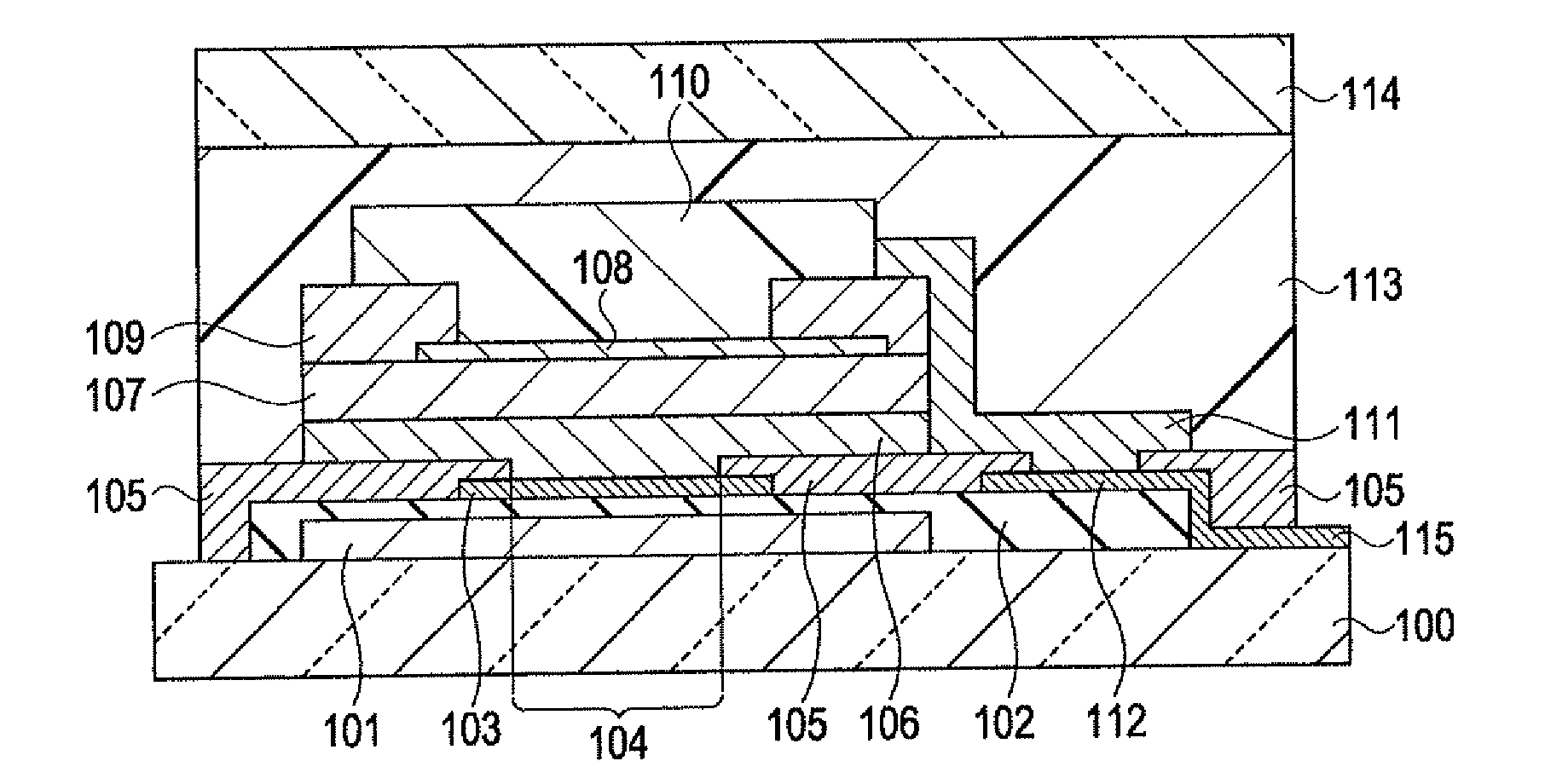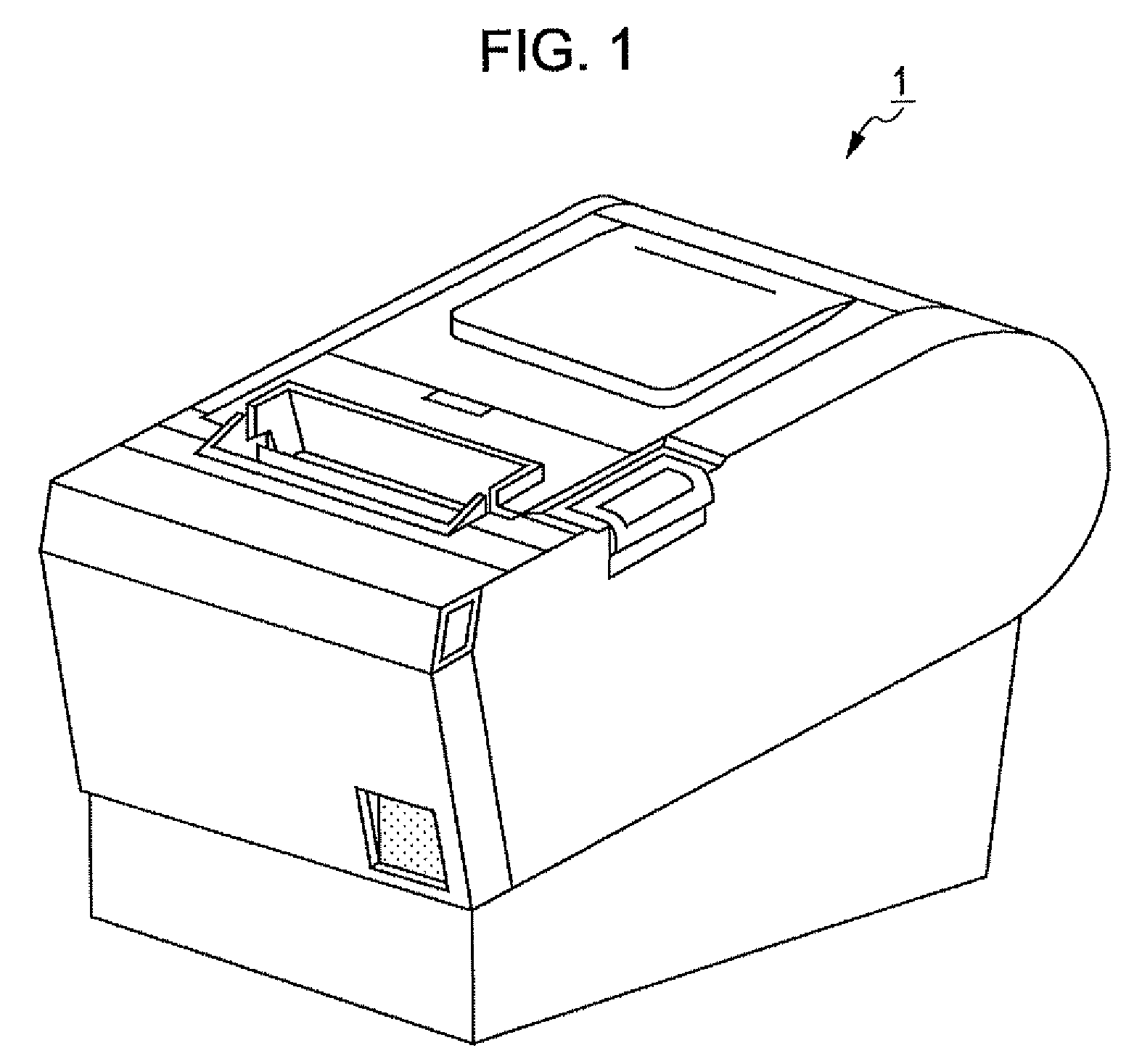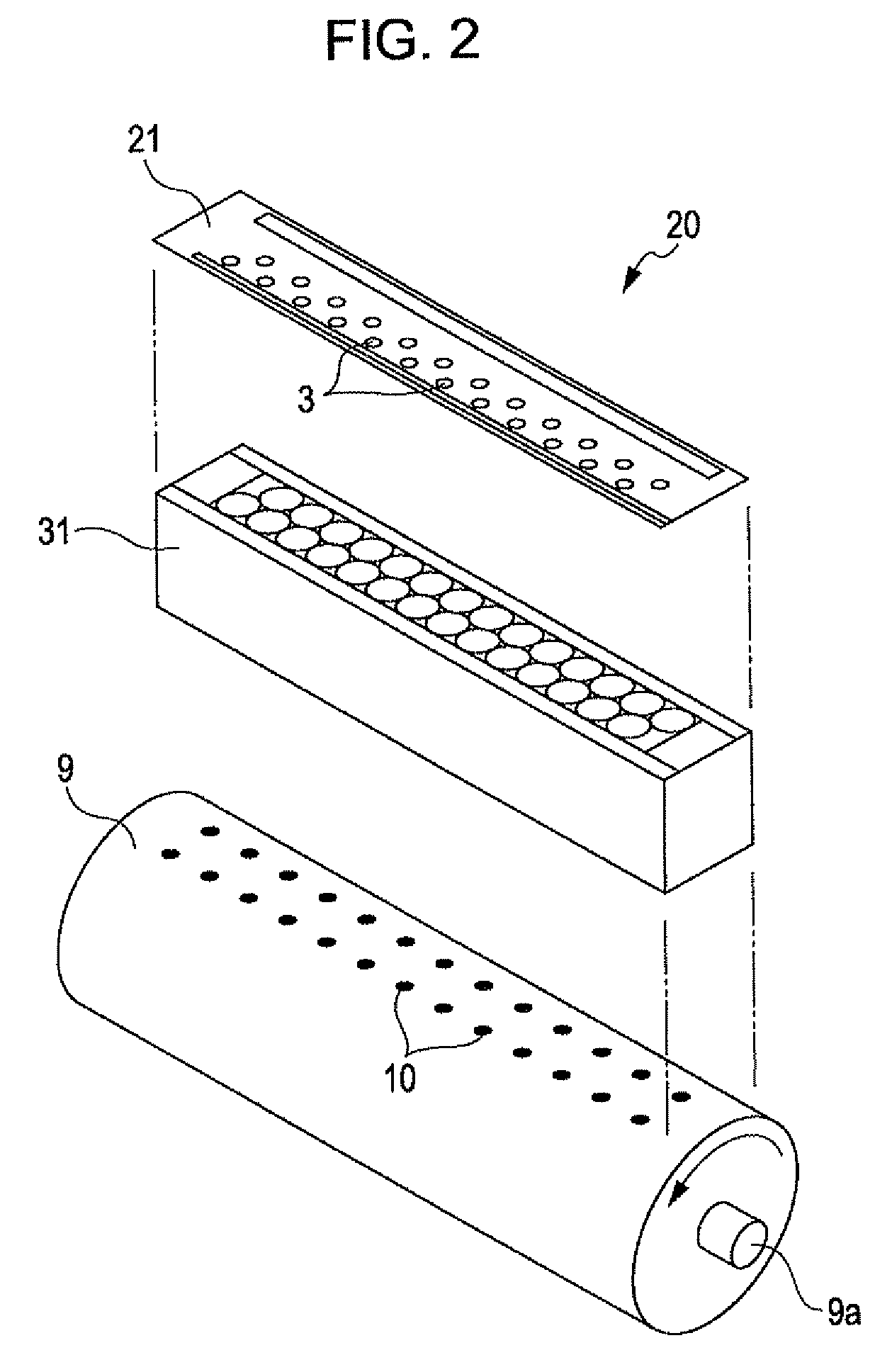Organic electroluminescent device, method for producing organic electroluminescent device, and electronic apparatus
a technology of electroluminescent devices and organic materials, which is applied in the manufacture of electrode systems, electric discharge tubes/lamps, and discharge tubes luminescent screens, etc., can solve the problems of difficult design of optical systems that control light emanating from organic light-emitting layers, and difficult top-emission structures to use. achieve the effect of low non-uniformity of luminance and high luminan
- Summary
- Abstract
- Description
- Claims
- Application Information
AI Technical Summary
Benefits of technology
Problems solved by technology
Method used
Image
Examples
first embodiment
Organic Electroluminescent Element and Electronic Apparatus Including Same
[0055]Embodiments of the invention will be described below with reference to the attached drawings.
[0056]FIG. 1 is a perspective view of a page printer serving as an electronic apparatus. A page printer 1 feeds in a print sheet in a feed tray, performs printing processing, and outputs the print sheet with image information.
[0057]FIG. 2 is a schematic view of an exposure unit 20 arranged in the page printer 1 according to an embodiment. The exposure unit 20 includes a line head 21 constituted by organic electroluminescent elements (hereinafter, referred to as “organic EL elements”) 3, a lens array 31 configured to bring light passing through the line head 21 into focus to form an image, a photoconductive drum 9 exposed with light passing through the lens array 31 from the line head 21, and a rotating drum shaft 9a.
[0058]When the organic EL elements 3 emit light beams, the photoconductive drum 9 is irradiated w...
second embodiment
Method for Producing Organic EL Element
[0086]A method for producing an organic EL element will be described below with reference to the attached drawings. FIGS. 4A, 4B, and 5 are cross-sectional views illustrating a procedure for producing the organic EL element 3.
[0087]As a step 1, after the optically transparent substrate 100 composed of, for example, glass is rinsed, an aluminum layer having a thickness of, for example, about 200 nm is deposited thereon by, for example, evaporation. An unnecessary portion is removed by photolithography and etching to form the reflective layer 101. Alternatively, in this step, the reflective layer 101 may be formed by evaporation with a shadow mask.
[0088]As a step 2, silicon nitride is deposited thereon by, for example, chemical vapor deposition (CVD). An unnecessary portion is removed by photolithography and etching to form the interlayer insulating layer 102. The arrangement of the interlayer insulating layer 102 prevents electrolytic corrosion ...
first modification
of Second Embodiment
[0100]In the foregoing embodiment, the reflective layer 101, the interlayer insulating layer 102, and the positive electrode 103 are formed on the substrate 100 by the steps 1 to 3. Alternatively, the reflective layer 101, the interlayer insulating layer 102, and the positive electrode 103 may be replaced with a light-reflective positive electrode 103, simplifying the production process. In this case, the positive electrode 103 is composed of a material selected from silver, gold, nickel, palladium, platinum, silicon, alloys thereof, mixtures thereof, and doped materials thereof and has a thickness of about 200 nm. The light-reflective positive electrode can be formed by, for example, evaporation with a shadow mask.
[0101]The shape of the current-carrying portion 104 formed in the step 4 is not limited to a circle having a diameter of about 40 μm. Examples of the shape of the current-carrying portion 104 that may be used include rectangles, ellipses, polygons, ind...
PUM
 Login to view more
Login to view more Abstract
Description
Claims
Application Information
 Login to view more
Login to view more - R&D Engineer
- R&D Manager
- IP Professional
- Industry Leading Data Capabilities
- Powerful AI technology
- Patent DNA Extraction
Browse by: Latest US Patents, China's latest patents, Technical Efficacy Thesaurus, Application Domain, Technology Topic.
© 2024 PatSnap. All rights reserved.Legal|Privacy policy|Modern Slavery Act Transparency Statement|Sitemap



